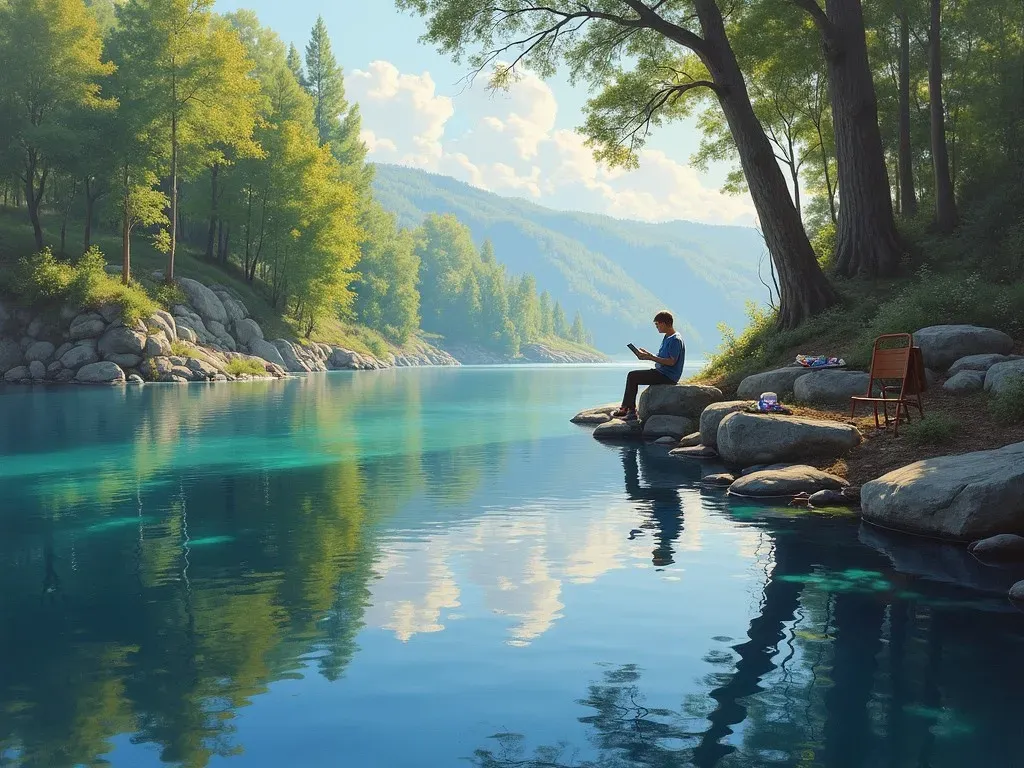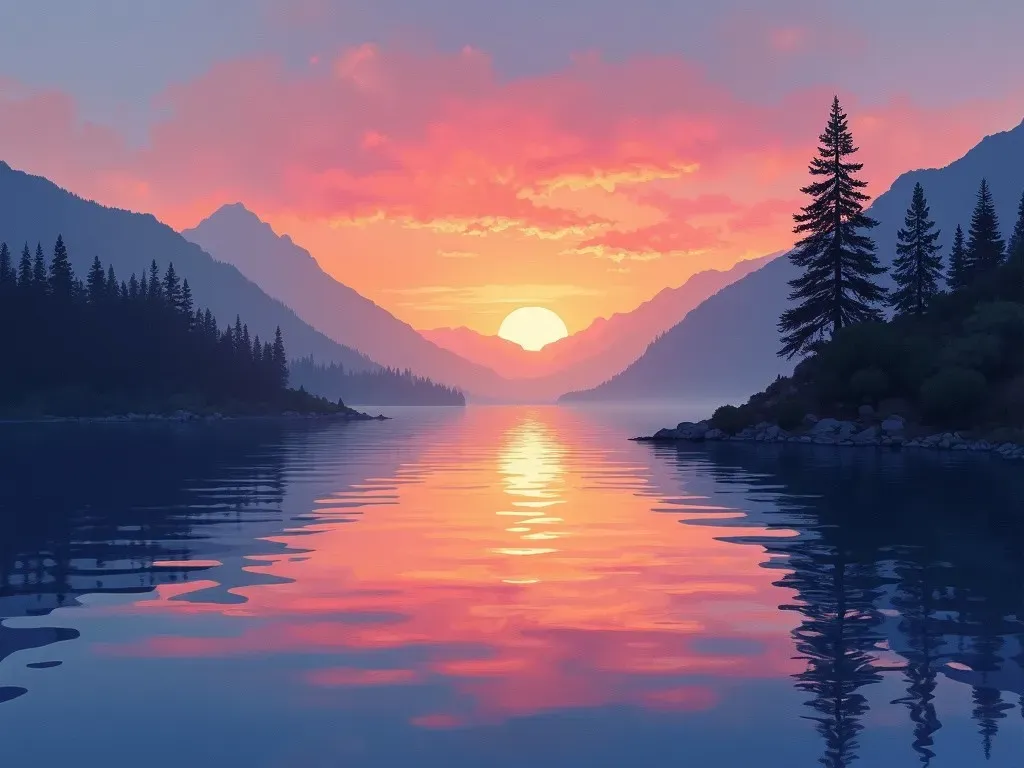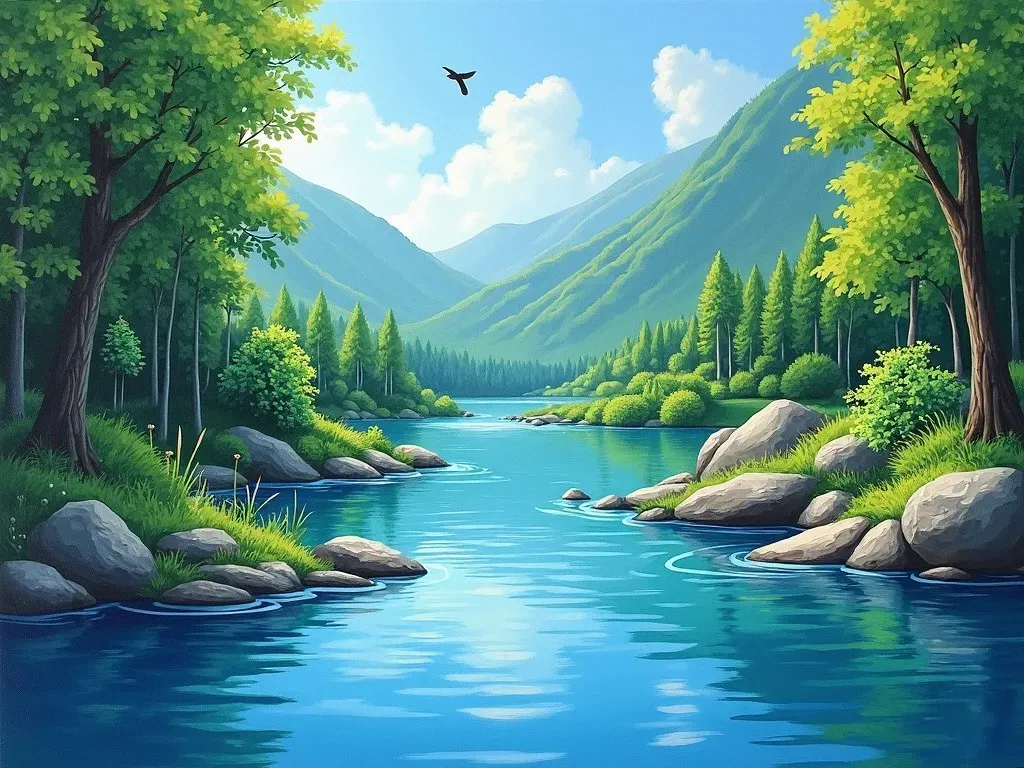Seed Keyword: oil painting water
Keywords: realistic water painting, painting in the water, painting ripples in water, how to paint water step by step
Realistic water painting is an art form that involves replicating the subtle nuances of water, including the play of light, movement, and texture. This painting genre is not just about using blue tones; it’s about understanding the connection between water and its surroundings. Whether you’re a beginner or an experienced artist, learning how to paint water effectively can greatly elevate your artistic skills.
Understanding the Basics of Water
Water is a complex subject due to its reflective properties and ever-changing nature. Here are key aspects artists must consider:
| Aspect | Details |
|---|---|
| Reflection | Water reflects its surroundings, altering colors and shapes. |
| Movement | Calm water looks different from turbulent waves. |
| Transparency | Varying depths create different tones and colors. |
| Light | The interaction of light with water creates highlights and shadows. |
Techniques for Painting Realistic Water
1. Start with Still Water
For beginners, painting still water is an ideal starting point. This helps you practice capturing reflections and color gradations without the added complexity of waves. Here’s a quick guide:
- Choose a Reference Image: Find a photograph of a calm body of water.
- Select Your Colors: Use a limited palette featuring blues and greens, as well as whites for highlights.
- Establish the Base: Lay down a solid base layer using broad strokes.
- Layering: Gradually add depth by applying lighter colors and white highlights to suggest reflections.

2. Mastering Ripples and Waves
Once you’ve conquered still water, it’s time to tackle movement. Here’s how to paint ripples in water:
- Observe Movement: Pay attention to how light interacts with the ripples.
- Brush Techniques: Use a flat brush to create quick, horizontal strokes.
- Color Variation: Utilize darker hues in the crests and lighter colors in the troughs.
Table: Essential Tools for Painting Ripples
| Tool | Purpose |
|---|---|
| Flat Brush | For creating short strokes and texture. |
| Round Brush | Ideal for detailing and blending. |
| Palette Knife | Useful for adding texture and highlights. |
Reference Video
Step-by-Step Guide to Painting Water
Step 1: Sketch the Composition
Begin by sketching the outline of your water body. Incorporate foreground elements such as rocks or foliage to create depth.
Step 2: Color Blocking
Choose your base colors. For a reflective pool, this may include multiple shades of blue and green.
Step 3: Focus on Reflections
This stage is crucial. Paint the reflections of elements like trees or clouds. Pay attention to symmetry.
Step 4: Add Details
Utilize a smaller brush to add details to the water’s surface. Capture the highlights and shadows to create a sense of depth.
Step 5: Final Touches
Finally, take a step back and assess your painting. Adjust colors, enhance highlights, and refine details as needed.

FAQs About Realistic Water Painting
Q1: What brushes are best for painting water?
A1: Flat and round brushes are most effective for painting textures and subtle details in water. A palette knife can also be useful for highlights.
Q2: What mediums can I use for realistic water paintings?
A2: Various mediums can be used, including acrylics, oils, and watercolor. Each has its advantages depending on the desired effect.
Q3: How do I depict movement in water?
A3: To depict movement, focus on the use of varied brush strokes and a diverse color palette to represent light and shadow.
Resources for Further Learning
For those looking to delve deeper into the world of realistic water painting, check out the following resources:
- Draw Paint Academy – How to Paint Realistic Water
- Artists Network – Water Painting Techniques
- Acrylic University – A Complete Guide on How to Paint Water
Conclusion: Embrace the Challenge
Realistic water painting is incredibly rewarding yet challenging. The key lies in patience, observation, and practice. By mastering the techniques outlined above, you can unlock the captivating beauty of water in your artwork.

In conclusion, painting realistic water requires a blend of techniques, observation skills, and creativity. As you practice and refine your skills, you will find your own unique style and techniques for capturing the ever-fascinating nature of water in your paintings. Happy painting!
